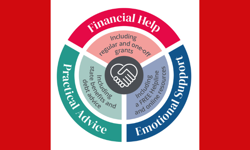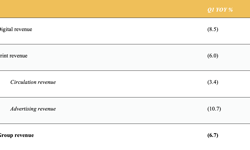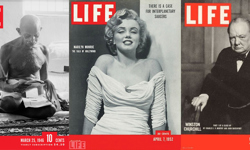Pricing
When the Sun snuck in with a 5p price rise, up to 35p, in the gloomy days of mid-November, they were hoping to catch readers in benevolent pre-Christmas mood.
There’s nothing guaranteed to turn-off consumers quicker than charging them more, but, for News International, this is a cleverly calculated risk that will earn them more in extra circulation revenue despite a dip in sales.
Editors think there is never a good time to put up the cover price. They always lose readers as a consequence and rarely get to benefit from any increase in revenue.
This ‘price elasticity’, as the boffins call it, is stretchier with papers that can count on a more loyal readership. Sun readers have always been loyal, and, while the affect of the November increase maybe contributed to the 1.42% fall in year-on-year sale, any small fall will soon be recovered.
Received wisdom has it that frequency of readership falls with a price rise, but that they return to the everyday buying habit when the immediate impact of the price rise has been forgotten.
But does dropping the price have the reverse impact? They obviously hope so at the Evening Standard, where midweek papers have been promoted at 20p, 15p below the regular price. The November ABC figure was more than 6.5% down from last year, so perhaps the jury is still out.
And the Daily Star, another title heading in the wrong direction, countered the Sun’s move by putting ‘10p’ in whopping type on its cover. 10p ‘cheaper than the Sun’, that is, not 10p for the paper.
As Aura Iordan, business analyst at the World Association of Newspapers (WAN), reports: ‘Circulation is vanity. Advertising is sanity.’ A WAN study has discovered that a company retains only 30 percent of revenue generated from circulation – the rest is costs – but keeps 87 percent of revenue generated from advertising.
And Rupert Murdoch, the man who sparked a hail of criticism for dropping the cover price of the Times two days a week in 1999, has weighed in with his view that daily newspapers remain overpriced.
‘I think the daily papers are all overpriced. With Saturday and Sunday papers, people have a lot more time to read, and so I think they are a lot less price sensitive,’ he told the journalists’ trade paper Press Gazette. ‘But for the dailies, I think it’s very important that the purchase of a paper should be insignificant as a price. I guess I’m just a bit out of date on this feeling, but 35p, 40p is a high price; it’s a lot more than it was 10 or 15 years ago.’
Depends where you go in the world though, Rupert. Using the completely unscientific ‘newspaper and coffee’ method of calculation, Britain’s papers look pretty good value. A copy of the Guardian at 60p costs about one third of a fairly modest cup of coffee, whereas you wouldn’t get much of a drink to go with the Irish Independent at €1.60. The Sydney Morning Herald, at $2.20, is about the same as the coffee, similarly the €2 Iltalehti from Finland. For value, though, head to Russia, where the country’s best-selling daily, Komsomolskaya Pravda, costs around 10 roubles (20p), one tenth of the ever-increasing price of the coffee.
One look at the newsagent’s shelves, though, reveals that it’s not price – or even content – that is driving sale. The front pages sing out with a range of promotional activity:
* Competitions. One of the oldest tricks in the book. The big prizes, such as houses and cars, have to be financed and the hope is that a long-running token-collect promotion will lock in fickle readers. Latest versions include ‘win something by a certain time’ which lure readers into calling in on premium phone lines.
* Free anything. Mr (or probably more likely, Mrs) Greedy has long been the best friend of the promotions department. The newspaper teams up with suppliers for whom the offer is either inexpensive, such as cups of coffee and seeds, or free, like cinema seats that would otherwise be empty.
* Magazines. Content that was always somewhere in the newspaper – homes, fashion, gardens, sport – now has its own stand-alone supplement and, increasingly, magazine.
* Exclusive content. More the province of mainstream magazines such as Hello!, OK!, and Heat, which use strong cover lines to sell the content. The notion that readers actually buy newspapers because they want to read what’s in them seems to have been dismissed for added-value promotions.
* Free CDs and DVDs. Oh dear. Everyone seems to have it in for these cheap and often not-so-cheerful add-ons, complaining that soon we’ll be able to buy a DVD with free newspaper. Even Murdoch has weighed in – ‘I personally hate this DVD craze’ – which, he said, inflated sales one day, but had no longer-term impact. Readers like them, but do feel cheated if they have to send off for the disk.
* Offers: Paris for £65 or Butlins for £10. Now gravitating towards ‘password collect’, the latest version of token collect, which can operate more efficiently with SMS and the internet.
Snap & send
It was, trumpeted the Daily Telegraph’s front page, ‘a brilliant new way to be part of the paper.’ The gushing copy said, ‘have you ever found yourself in the midst of a major news story and wanted to share it with others? Now that so many people have mobile phones with cameras, the possibility exists for us all to contribute to the news agenda.’
Easy as that. Take a snap, send it in, see it on the website or in the paper and everybody’s happy. Well, not quite… Cue wailing and gnashing from both the National Union of Journalists and the Chartered Institute of Journalists citing legal and copyright issues plus the perennial protection of ‘the jobs of professionals in the industry.’
If this predictable po-faced attitude is supposed to put the frighteners on people who want to be part of the paper rather than be lectured at, then there’s bad news from markets around the world.
The South Korean site Ohmynews – http://english.ohmynews.com/ – has nearly 40,000 citizen reporters on its books, who submit content on just about everything, with little or no interference from the so-called professional journalists back in the office. Along with this huge workforce of eyes and ears, come lots of potential customers too. Last year it turned in a profit of $400,000, two thirds of it from advertising.
Then there is Scoopt, which gives the ‘photographer’ half of the proceeds of pictures they sell and Spy Media, the ‘News Photo Marketplace for Everyone.’
There are plenty of yucky names out there for this. ‘Citizen journalism’ seems flavour of the month along with ‘personal’, ‘individual’, ‘participatory’, or ‘grassroots’ media and even ‘user-generated content’ (UGC), which would no doubt impress the accountants.
The issue has exercised the venerable Poynter Institute, based in Miami, who worry that the ‘citizen journalism’ label seems to imply that professional journalists are not citizens, rather than what's really meant: ‘citizens practising amateur journalism.’
But what does all this mean for sales and readership? Online guru, Jeff Jarvis, is plain in his assertion that no one owns journalism. ‘It is not an official act, a certified act, an expert act, a proprietary act. Anyone can do journalism. Everyone does. Some do it better than others of course. But everyone does it,’ he says.
And, like the threat of the internet on classified advertising, the whole issue of citizen journalism could soon start to exercise the major media players. The parallels are clear. Just as Trinity Mirror and the Daily Mail have spent millions buying up internet advertising sites, soon they may look towards consolidating content that appears on the web. Then the future does start to look very different for our beleaguered national newspapers.
What your front page says about you
A regular view on how a front page says more than you think about a title. This issue: the mid-market dailies.
Daily Mail
Puffery: Not much room for manoeuvre. Just a small, rather old-fashioned colour block plugging Femail ‘magazine’.
Content: The Mail has built its success on knowing which buttons to push. Drugs, immigration, binge-drinking etc will always win the day, as, increasingly, does attacking Tony Blair.
Come-ons: With the small tabloid size front page, every effort has to be made to get readers to turn inside, so just about everything is a cross-ref to what’s on the other 90 or so pages. Attention-grabbing names – Paxman, Portillo etc – plus emotive pictures.
Positioning: Resolutely Middle England, but there are fears that this constituency is shrinking. Families of mum, dad and two children, ‘proper’ jobs, holidays, savings, mortgages and watching TV are all declining. The Mail has fought shy of the internet – dailymail.co.uk is truly terrible – and it is difficult to see it moving that quickly towards a digital future.
Inside word: The days of a paper run by a dictatorship (in this case editor-in-chief Paul Dacre) may be numbered. He took over from the similarly influential David English, but there is no obvious successor. Owners DMGT have signalled their intentions about the newspaper market by putting regional group Northcliffe up for sale. The Daily Mail is clearly the success story of modern British newspapers, but there are fears that it may have plateaued and there is little more growth to be had. What there is, if anyone else was to take it on, is an opportunity to cut costs. Trinity Mirror would be licking their lips…
Daily Express
Puffery: Clever design makes the best use of available space. ‘Win a camper van’ gets a good show, even finding room to fess up that it needs a call to a premium rate phoneline.
Content: Even Diana’s untimely death eight years ago hasn’t stopped the Express running story after story about the former darling of the camera. Does anybody still care? Doesn’t seem to be a question asked in the newsroom. If there’s no Diana tale to be had, then they’ll reach for the files marked ‘Politically Correct Madness’, ‘Scourge of the Gypsies’ or ‘How Bad is Blair’.
Come-ons: A decision to go for size over quantity means there is not as much going on as there is on the Mail front.
Positioning: Not content with calling itself ‘The World’s Greatest Newspaper’, the Express has added ‘Britain Defiant’ to its masthead. Herein lies the clue to where the Express thinks it will mop up: anti-Europe, anti-immigration, anti-anything really.
Inside word: The great days of Beaverbrook’s mighty paper of power and influence are well and truly over. Circulation has been in free-fall against the all-conquering Mail, and the Express now sells barely a third of its great rival. That brings with it decreased investment and a smaller budget to buy journalists and promotions. With its much slimmer stablemate, the Daily Star, selling much the same at a lower cost base, owner Richard Desmond may soon lose patience and look to get out with as much money and face as possible.
FEATURE
Alan Geere on the nationals - 2
Each issue, Alan Geere casts an eye over the performance of the national press.










